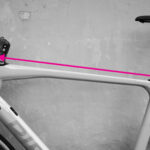Navigating the world of kids’ bikes can bring up a lot of questions for parents, especially when it comes to safety and functionality. One common point of confusion revolves around bike brakes: should you choose a pedal bike with hand brakes or a coaster brake? Let’s dive into the specifics, focusing on Coaster Brake Bikes, to help you make the best decision for your child.
But first, let’s address the core question: Is a coaster brake or a freewheel hub better for a child’s bike? Or is a combination of both the ideal solution?
To understand this, let’s define what these terms actually mean:
Coaster Brake: This braking system is integrated into the hub of the rear wheel. To engage the brake, the rider simply pedals backwards. This reverse pedaling action activates the brake mechanism within the hub, slowing or stopping the bike.
Freewheel Hub: A freewheel hub allows the pedals to rotate independently of the rear wheel. This means a child can stop pedaling and coast, or even pedal backwards without engaging the brake, much like adult “10-speed bikes.” Bikes with freewheel hubs typically use hand brakes for stopping.
Understanding the legal requirements also sheds light on why coaster brakes are so prevalent on children’s bikes.
The Legal Angle: CPSC Mandates and Coaster Brakes
The Consumer Product Safety Commission (CPSC) in the US has specific regulations regarding bicycle safety, particularly for smaller bikes. Any bike with a maximum seat height of 25 inches or less is legally required to be sold with a coaster brake. This regulation is in place to ensure a basic level of braking safety for young riders. Bikes with a freewheel hub and a seat height under 25 inches are non-compliant and subject to recalls. Some brands might attempt to circumvent this by including an extra-long seatpost, pushing the maximum seat height above the 25-inch limit. It’s also technically possible to convert a coaster brake bike to a freewheel setup, but this involves replacing the entire rear wheel, adding to the cost.
Bikes Equipped with Both Coaster and Hand Brakes
Interestingly, some bike manufacturers go beyond the minimum requirements and equip their bikes with both coaster brakes and hand brakes. This approach is particularly beneficial for young riders as it introduces them to both braking systems early on. By learning to use both coaster and hand brakes, children are better prepared for any type of bike they might ride in the future, enhancing their safety and confidence. The BYK range of ergonomic kids’ bikes is a notable example of bikes that incorporate both braking systems, demonstrating a commitment to comprehensive safety and rider education.
Delving Deeper into Coaster Brakes: Advantages and Considerations
- Familiarity and Longevity: Coaster brakes have been a standard braking method for over a century. They are a time-tested technology that many adults are familiar with from their own childhood bikes.
- Learning Curve: Like hand brakes, coaster brakes require a period of adjustment to master. Children need to learn to anticipate stops and position their pedals correctly to initiate braking effectively.
- Rear Wheel Braking Focus: Bikes with coaster brakes often rely solely on the rear brake, without a front brake. This means there’s a potential for rear wheel lock-up and skidding, especially if braking is too forceful. Remember those skid mark contests?
- Simplicity and Maintenance: Coaster brakes are generally low-maintenance as the braking mechanism is sealed within the hub, protected from the elements.
Freewheel Hub and Hand Brake Systems: An Alternative Approach
- Independent Pedaling and Braking: Bikes with a freewheel hub are paired with front and rear hand brakes. These brakes operate independently of pedal position, offering more immediate and controlled stopping power.
- Reflex and Control: Hand reflexes are often quicker and more refined than leg reflexes. Fingers can also apply braking force more precisely than feet trying to pedal backwards, providing better modulation.
- Easy Pedal Positioning: A freewheel hub makes it simple to position pedals for starting or maneuvering, as the pedals and wheels move independently.
- Maintenance and Adjustment: Hand brake systems, whether caliper or v-brakes, use brake pads that press against the wheel rim. These systems require periodic adjustment and brake pad replacement as they wear down. Brake cables may also need replacement over time.
- Preparing for Future Bikes: Hand brakes are the standard on most adult bikes and more advanced children’s bikes. Learning to use hand brakes early on is crucial for a smooth transition to larger and more complex bikes in the future, ensuring safer and more confident riding as skills progress.
In conclusion, understanding the nuances of coaster brake bikes versus freewheel and hand brake systems is essential for parents choosing the right bike for their child. While coaster brakes are legally mandated for smaller bikes and offer simplicity, hand brakes provide enhanced control and prepare children for future cycling. Bikes that incorporate both systems offer a comprehensive approach, blending safety with skill development.

